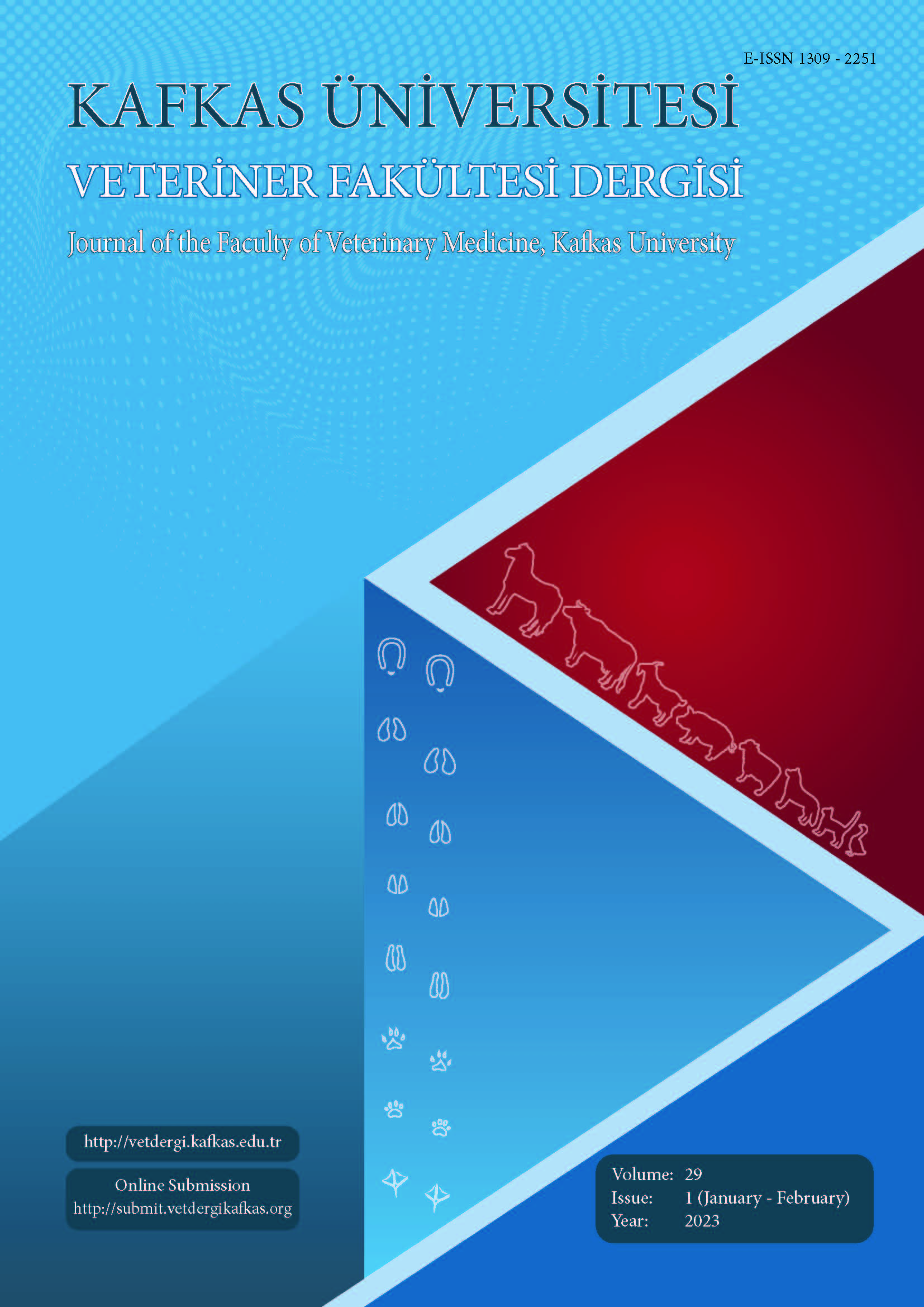
This journal is licensed under a Creative Commons Attribution-NonCommercial 4.0 International License
Kafkas Üniversitesi Veteriner Fakültesi Dergisi
2023 , Vol 29 , Issue 1
Molecular Characterization and Toxins Optimization of Indigenous Clostridium perfringens Toxinotype B Isolated from Lamb Dysentery Clinical Cases
1University of Veterinary and Animal Sciences, Faculty of Veterinary Science, Institute of Microbiology, 54000 Lahore, PAKISTAN2Cornell University, College of Veterinary Medicine, Department of Population Medicine and Diagnostic Sciences, 14853 Ithaca, New York, UNITED STATES OF AMERICA
3Cornell University, College of Veterinary Medicine, Department of Population Medicine and Diagnostic Sciences, 14853 Ithaca, New York, UNITED STATES OF AMERICA
4The Islamia University of Bahawalpur, Faculty of Veterinary and Animal Sciences, Department of Microbiology, 63100 Bahawalpur, PAKISTAN DOI : 10.9775/kvfd.2022.28738 Clostridium perfringens toxinotype B is causative agent of lamb dysentery in Pakistan. For assessment of gene expression, it is preferred to optimize toxin production potential of indigenous isolates. Current study aimed to confirm the local isolates of C. perfringens toxinotype B on molecular basis followed by optimization of major toxins under varied physical and chemical conditions. The isolates were identified using microbiological and biochemical assays and confirmed by PCR followed by nucleotide sequencing of 16S rRNA amplified gene. These nucleotide sequences were submitted to NCBI GenBank® and accession numbers retrieved were MW867097, MW867098, MW867099, MW867100 and MW867101. Confirmation of toxinotype B was done by PCR amplification of alpha beta and epsilon toxin genes. Major toxins were optimized at varied physical (temperature and pH) and chemical (reinforced clostridial media, Robertson"s cooked meat media, egg meat media, fluid thioglycolate media and iron milk media) conditions. Higher hemolytic units of alpha toxin (21.45±0.53 HU/mL), epsilon toxin (16.57±0.19 HU/mL) and higher cytotoxic units of beta toxin (18.65±0.34 HU/mL) were produced at 37°C with pre-adjusted pH 6.0 in Robertson cooked meat media. The ELISA percentages of alpha (14.27%, 13.92%, 13.67%, 13.56%, 13.45%), beta (12.43%, 12.81%, 12.39%, 12.61% and 13.07%) and epsilon (13.93%, 14.78%, 14.28%, 14.03% and 13.25%) toxins were also higher at same conditions. These optimized conditions can be used for major toxin gene expression studies of C. perfringens toxinotype B. Keywords : Alpha, Beta, Clostridium perfringens toxinotype B, Epsilon, Gene expression, Lamb dysentery, Robertson










